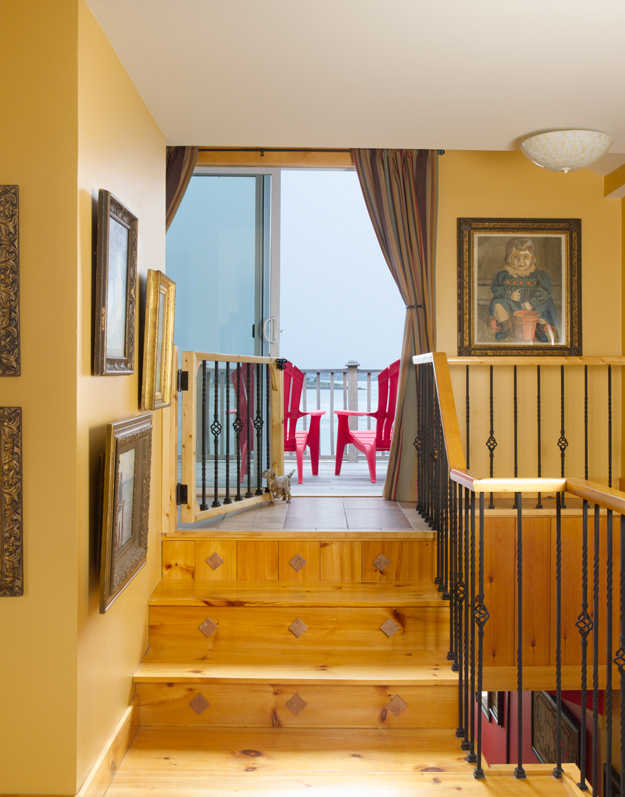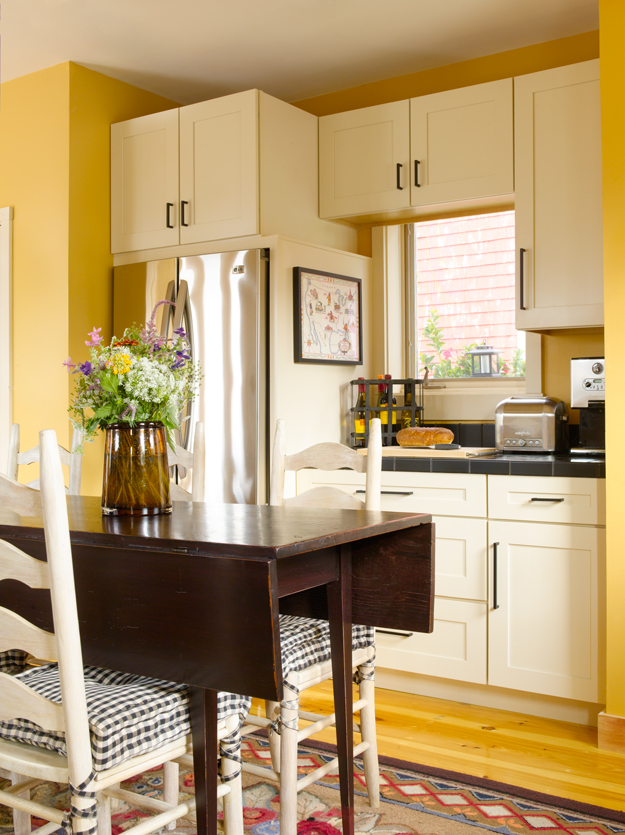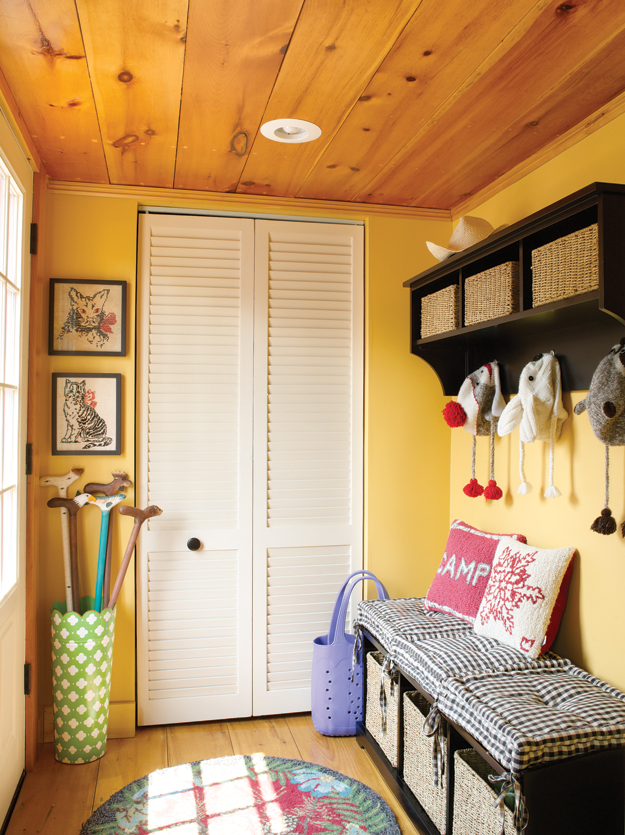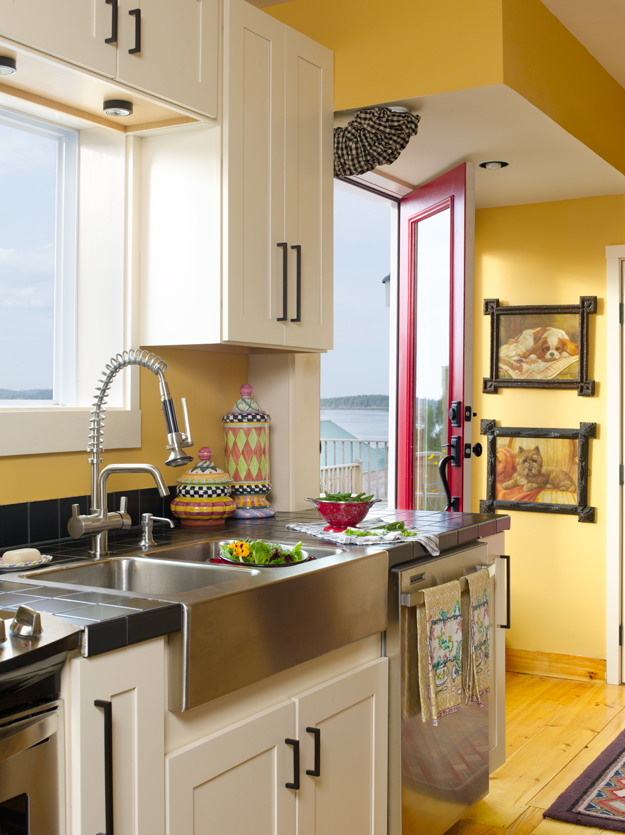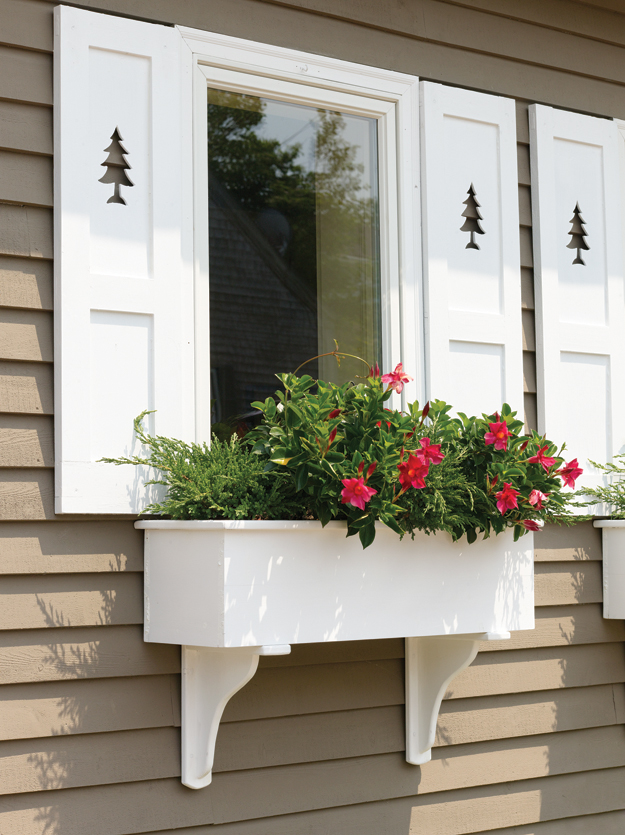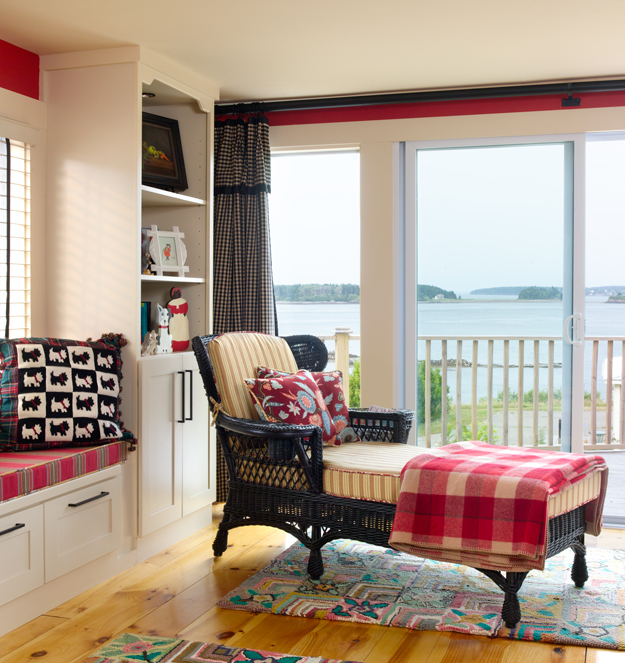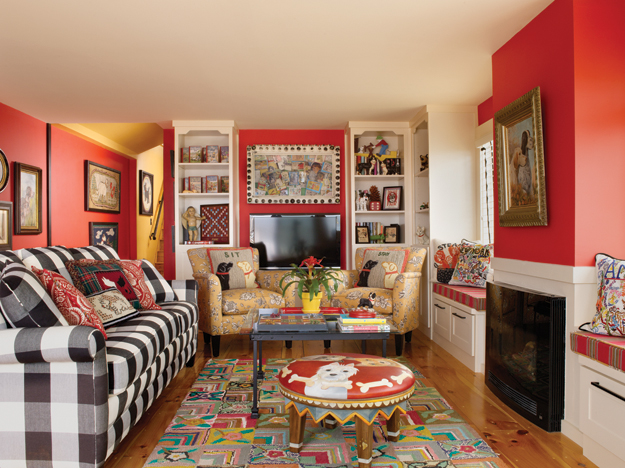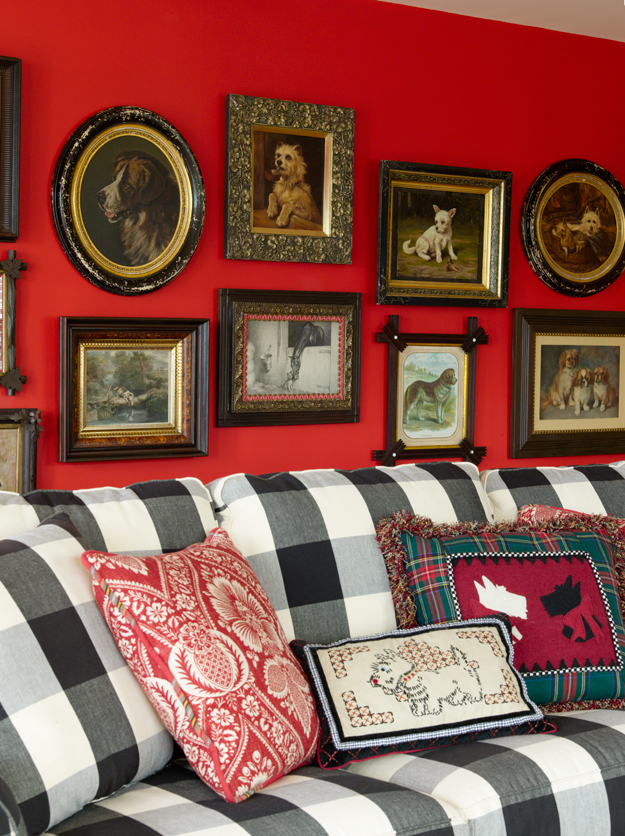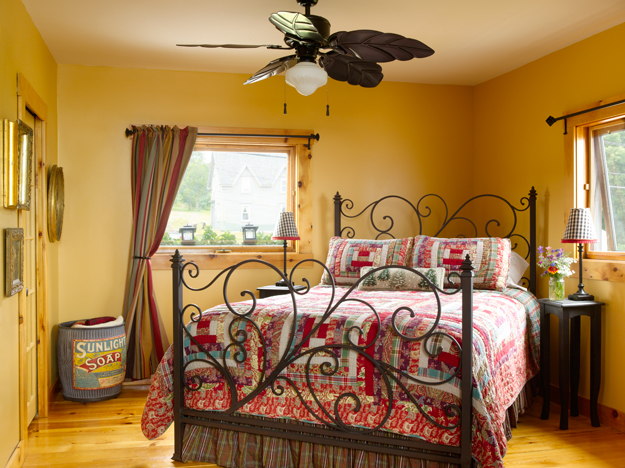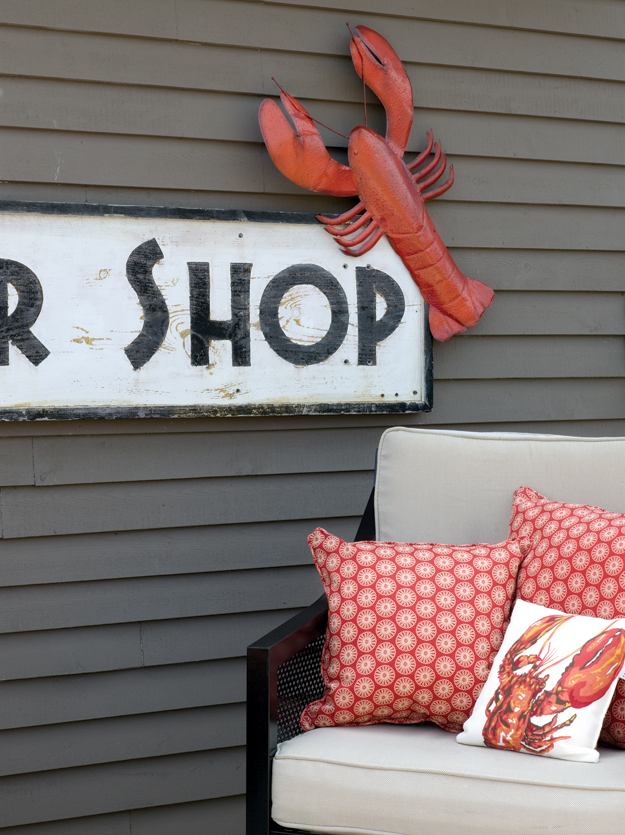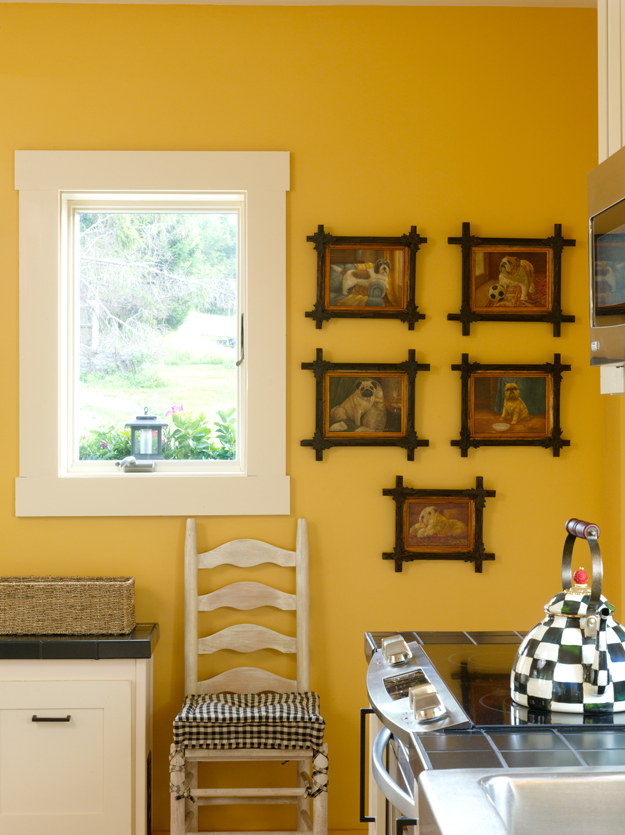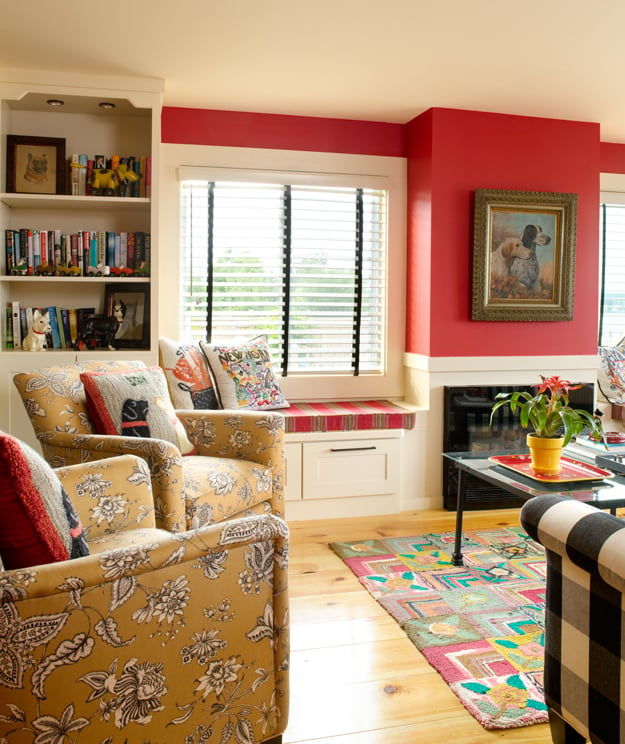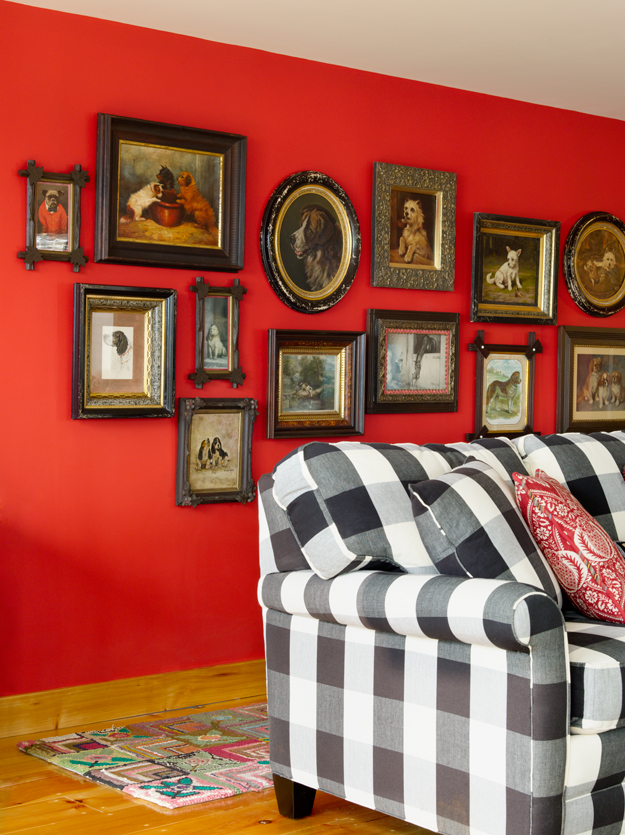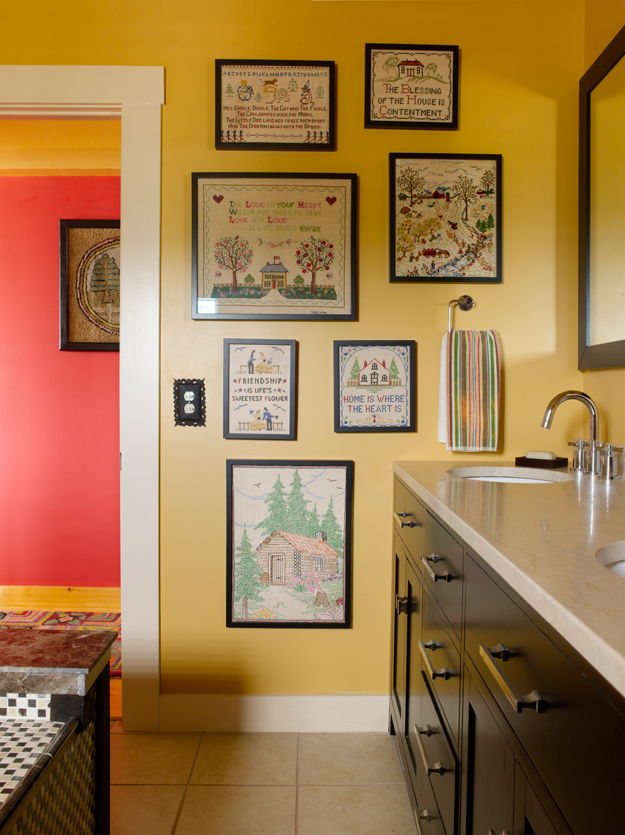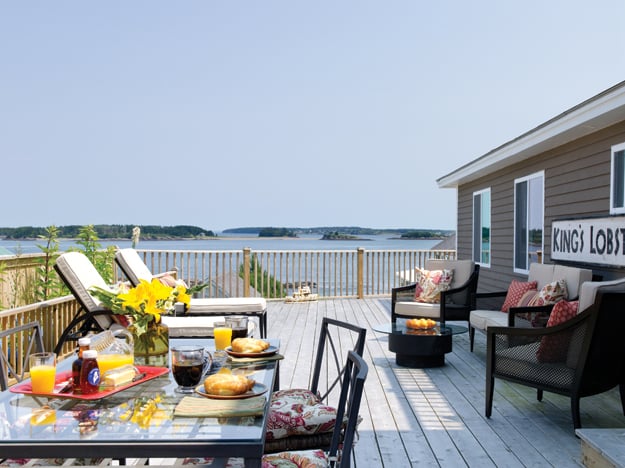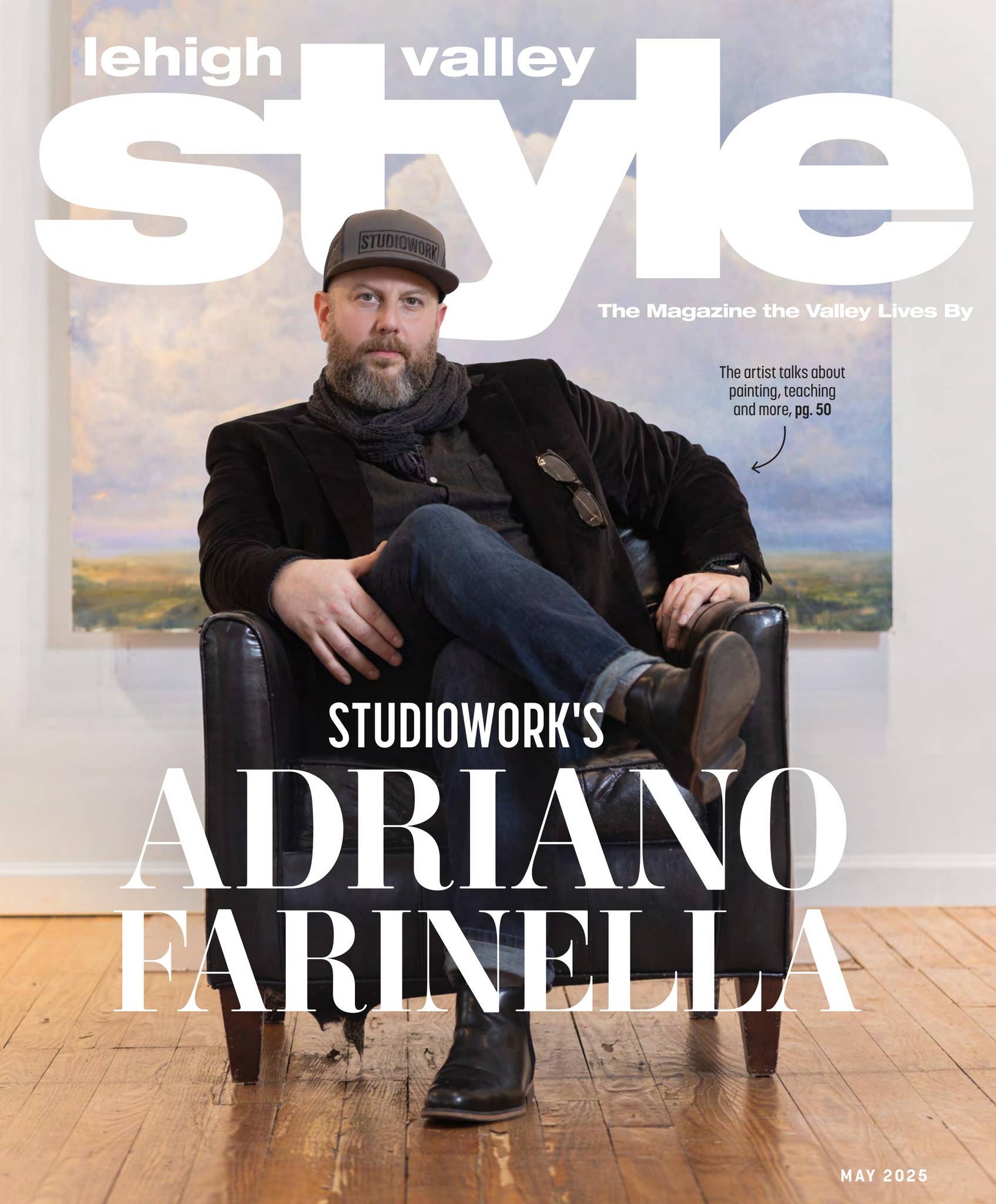
Standing on the deck of Lisa Stephen's house in Eastport, Maine, you can look across the water and see Canada. The wide, open space affords a panoramic view of the Bay of Fundy. Small islands dot the bay, including Campobello Island where a young Franklin D. Roosevelt spent most of his summers. From late June to October it's easy to spot whales that make their summer feeding grounds in these waters.
Stephen spends a lot of time out here; for five months out of the year it's her favorite spot to relax and to entertain. “It's a wonderful place to have dinners,” she says. “The view is incredible.”
Eastport is a long way from Riegelsville, Bucks County, where Stephen lived before taking up permanent residency in this small seaport community, population 1,300. In fact, Eastport, the easternmost city in the United States, is far from almost everything. There are no stoplights, movie theatres or big box stores—you have to travel 40 minutes to the big city of Calais (population 3,100) for fast food and Walmart.
Stephen stumbled upon Eastport six years ago, while researching locations for her retirement. “I had always harbored this dream of moving to Nova Scotia or somewhere in the Maritimes,” she explains. The plan was to spend six months there and six months someplace warm. She happened to pick up a copy of Coastal Living magazine's annual review of affordable waterfront properties. Number one on the list was Lubec, Maine, with a median home price of just $125,000.
There are no stoplights, movie theatres or big box stores–you have to travel 40 minutes to the big city of Calais (population 3,100) for fast food and Walmart.
Lubec, once the nation's sardine capital, was just three miles across the water from Eastport, another fishing community trying (successfully) to reinvent itself. Locals refer to this part of the world as Downeast Maine, or “the real Maine.” The idea of relocating to a town with a working waterfront where people lived year-round appealed to Stephen. She scheduled Eastport as the first of many appointments with Maine realtors, planning to start there and work her way down the coast.
Now, Maine is a very big state. It's a six-hour drive from the Lehigh Valley just to cross the border from New Hampshire. Tack on another six hours to Eastport and you get a lot of time stuck in the car. Stephen's original plan was to buy a place within easy driving distance of home for her and her two Cairn terriers, and work there remotely for a week every other month. But from the very first time she drove down the causeway connecting the mainland to Eastport, she knew it was home.
“It was late in the evening and the sun was setting and the ocean was on both sides and I drove down to Main Street and took a right turn onto the waterfront and there were lobster boats everywhere,” says Stephen. “Eastport is an old commercial town and I fell in love as soon as I turned that corner. I said, ‘This is my town.' I knew!”
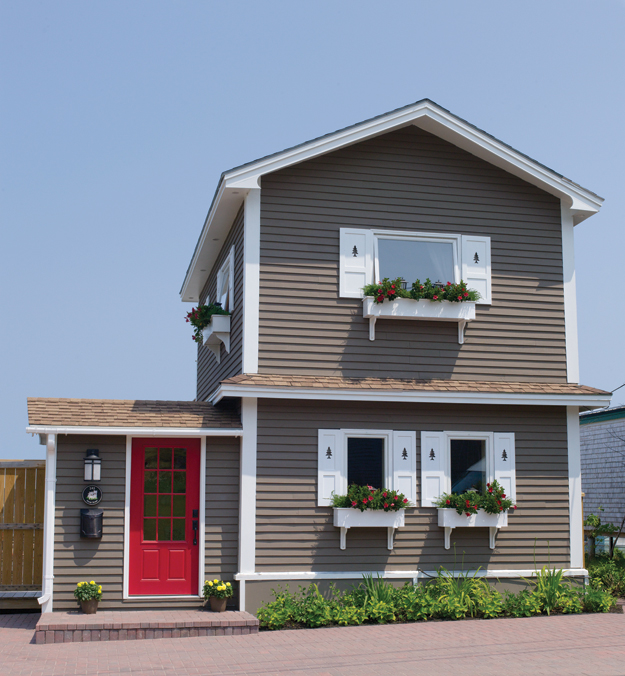
She stayed for four days, working with a realtor. One place they saw was a garage someone had converted into a house. It was ugly, but came with a terrific view of the water. She thought about it, but feeling the need for due diligence, kept the other appointments she'd made down the coast in Bar Harbor, Camden and Kennebunkport. “These towns were touristy and much more expensive,” says Stephen. “Eastport was much more affordable, but I couldn't get over the unattractiveness of that garage made into a house.”
A friend offered to go back with her to Maine to check it out. They looked at other Eastport properties, including an old commercial building in town. Dating back to the early 1800s, it had two storefronts with the original tin ceilings intact, plus two apartments upstairs. Stephen's friend suggested she buy it and convert the apartments into one big living space: “It would be like being in a Manhattan loft except it's in a fishing village!”
Ultimately, she bought the garage house. It had a water view and outdoor space for her dogs, two things high on her must-have list.
The quirky shutters with cutouts in the shape of a pine tree are appropriate for a cottage-style home but also a sly nod to Maine's status as the “Pine Tree State.”
She gutted the house. Off came the blue siding and in went more windows. “The interesting thing about Maine is that a lot of people whose families have been there for generations don't look to the water when they plan their living space,” explains Stephen. The new house was no exception but today, “Virtually anywhere you are in the house you can see the ocean.”
Up went new wood siding, typical for homes in coastal Maine towns. She wanted the color to coordinate with the huge wraparound deck going up outside. The deck would also be wood, but left natural to avoid having to stain it all the time. To find the perfect color match, Stephen drove around and looked at other houses. She had always admired one particular house in New Jersey and one day she knocked on the door to ask about the siding color. The kind owner gave her the information and Stephen took it to Sherwin-Williams to formulate a perfect paint match, which she describes as a “dark taupe.”
The quirky shutters with cutouts in the shape of a pine tree are appropriate for a cottage-style home but also a sly nod to Maine's status as the “Pine Tree State.” They're from an old house and Stephen found them in an antique store in Searsport, Maine. She had them cut down to size and refinished. “I actually have about 10 more of them,” she says. “I bought all they had, because you just never know. If I add on I'll have back up.”
Wooden window boxes complete the look. She changes them seasonally, refreshing winter's greens with bright freesias and lantana in the warmer months. “Flowers make me happy,” says Stephen.
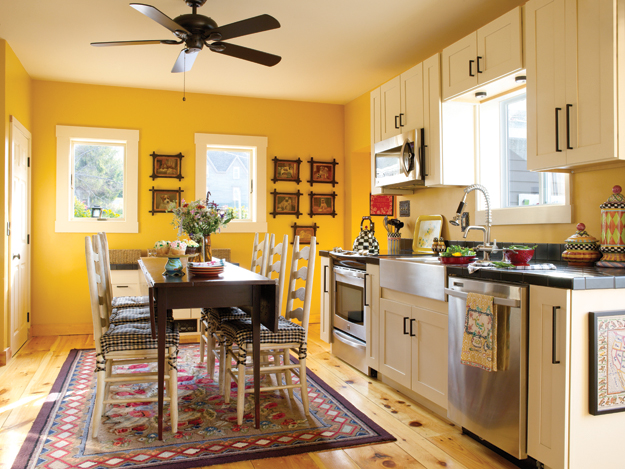
Inside, Stephen replaced everything in the kitchen and bathrooms, moved the utility room and installed wood flooring. Her goal was to create a place where she could completely unwind. She explains: “I came up here because the job I had at the time was very hectic and pressured and the economy was tough and business was tough. To come to Maine was an escape for me and I could literally drive over the causeway and feel myself let go. I could rejuvenate there.”
It was also a place to have some fun and indulge her whimsical side. To know Lisa Stephen is to know she is a passionate collector, taking a single theme and running with it. A dog lover, soon after purchasing the house she began collecting oil paintings of dogs, removing the canvases and putting them in antique frames. The living room is a literal portrait gallery, with dozens of framed canines. She also bought hooked rugs of dogs and old cross-stitch pictures, things that made her happy and had a sense of home about them.
The living room features an ottoman with the sweet faces of three of her dogs (two living, one passed) painted on leather. Stephen had admired a similar bench on display at A Mano Gallery in Lambertville, New Jersey and commissioned the artist to create something unique for Maine. The ottoman sits on a patchwork patterned hooked rug from Dash and Albert that Stephen had long-coveted and now had the perfect room for.
Her goal was to create a place where she could completely unwind.
If it sounds like the house has gone to the dogs, it has. Like many of the folks with summer homes in Maine, Stephen gave her house a name—The Dog House. There's a painted plaque by the front door with the name and her dogs' pictures on it, leaving no question as to who rules this roost.
The graphic red, off-white and black color theme is something Stephen had always wanted to try. When planning the interior decoration, she took a sample of black and white check fabric along with the patchwork rug to a store in New York City and worked with a salesperson there to buy all of the fabrics to make the pillows and cushions, draperies, sofa and chairs. They coordinated everything from top to bottom.
Eastport is rather isolated, so Stephen did a lot of mail order shopping to make things easy. Her couch and chairs came from Crate & Barrel—she shipped them the fabric and they upholstered the pieces and delivered them to Maine. “I also bought a lot of stuff from Pottery Barn and the bathroom fixtures come from Restoration Hardware,” she adds. Most everything is new, including the living room's wicker lounger, placed strategically to take advantage of the water view. Wicker is something else that figured in the grand plan. “I love wicker inside the house.”
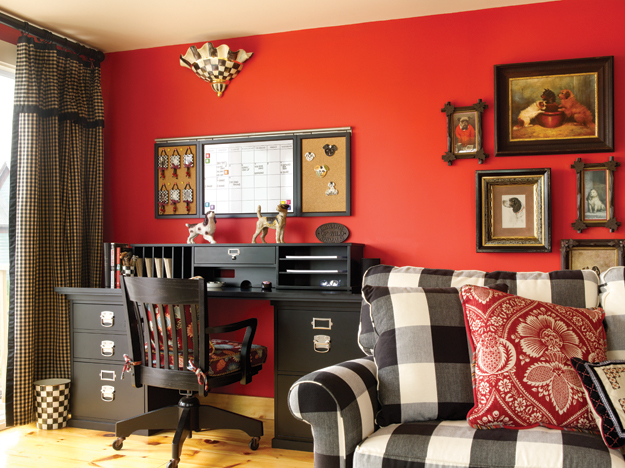
Aside from the picture frames, the only antique is the kitchen table. It dates to the early 1800s. Stephen found it in the Camden/Lincolnville area of Maine. It pairs beautifully with the iconic ladder-back chairs, freshened up with black and white check chair pads. The chairs have been around for 30 years—they're from her very first house and have traveled with her everywhere.
The new house is cozy, just 1,200 square feet. Downstairs is the kitchen, living room, a bathroom and mudroom. Upstairs is one bedroom and full bath. “It's my cocoon. It envelops me,” says Stephen. In colder months, a wood-burning fireplace warms the living room and she sits in one of the window seats to read, her dogs on the lookout. In the warmer months you'll find her outside on one of the two decks.
There's a small one off the second floor. Then there's the huge deck on the first floor. It runs down one entire side of the house and wraps around the back, adding another 1,200 square feet of living space. Guests naturally gravitate to the railings; there's not a bad view from any angle. If one looks a little to the left two hours before high tide they'll witness “Old Sow,” a whirling vortex that is the largest whirlpool in North America. It is so named, depending on whom you ask, for sounding like a loud drain or hungry pigs at the trough.
“Sweeties Downeast” offers homemade fudge and more than a hundred kinds of candies sold by the pound.
Stephen does most of her entertaining on the deck. She has a table that seats ten people and plenty of seating arranged in comfortable groupings. On one of her Midcoast Maine antiquing runs she purchased the huge “King's Lobster Shop” sign that dominates one wall. The shop owner was nice enough to help her securely fasten the ten-foot-long piece to the top of her car for the drive home. When she first hung it outside, her neighbors exclaimed, “People will think it is a store!”
Actually, Stephen may never have imagined herself as a storeowner, but she is one now. Not long after deciding to stay in Eastport full time she bought the old commercial building downtown and converted the two storefronts into a candy store. “Sweeties Downeast” offers homemade fudge and more than a hundred kinds of candies sold by the pound. Stephen runs the show behind an old wrap desk that came from a general store. For her, “It's a different kind of life, but at this stage in my life it is quite wonderful. When I opened right before the Fourth of July last year a little boy walked in and looked around and said, ‘Mom, this is heaven!'” How right he was.
